Components of Computer: “Unlocking the Heart of a Computer”
Updated: 16 Nov 2024
78
Components are the part of computer by which the computing system run. Components are made up of various hardware components that work together to store, process or display data. Each components plays a specific role that is important to the computer functionality. The following are the components of computer:
1. Central Processing Unit
The CPU is also called as Brain of Computer. It performs most of the processing inside the computer. The central processing unit carries out instructions from programs, performs calculations, and also manage the data flow of memory. It consists offer following parts:
Control unit:
The control unit (CU) is like the manager of the computer’s brain (CPU). It tells the computer what to do by reading and understanding instructions, and then directs the flow of data between different parts of the computer to make sure everything works properly.
Arithmetic Logic Unit
It is the fundamental building block in the CPU that performs the calculations, logical operations it needs to execute programs. From adding numbers to making decisions and comparisons, the ALU plays a crucial role in processing instructions and ensuring that the computer performs its tasks correctly and efficiently.
Registers
Registers are small, fast storage locations inside the Central Processing Unit (CPU) that hold data, instructions, or addresses temporarily while the CPU is executing tasks. They are essential for quick access to data that the CPU needs immediately for processing. Registers are much faster than the computer’s main memory (RAM), which makes them a crucial component in enhancing CPU performance.
2. Motherboard
The motherboard is the main circuit board of the computer and connects all the components. It provides pathways (or buses) for data to travel between the CPU, RAM, storage devices, and other peripherals. It also houses:
Chipset
A chipset is a collection of integrated circuits (chips) on a motherboard that manage data flow between the processor, memory, storage, and other peripherals. It controls how data is transferred between the CPU, RAM, and expansion cards, ensuring smooth communication within the computer.
RAM Slots
RAM slots are physical connectors on the motherboard where Random Access Memory (RAM) modules are installed. These slots allow the CPU to access and read data stored in the RAM quickly, enabling smooth multitasking and program execution.
PCI Slots
PCI slots (Peripheral Component Interconnect) are connectors on the motherboard that allow expansion cards, such as graphics cards, sound cards, or network cards, to be added to the computer. These slots provide a pathway for data transfer between the CPU and the expansion cards.
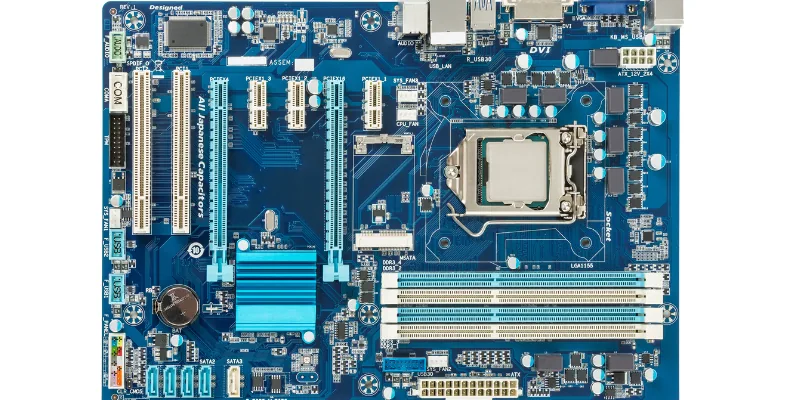
3. Memory (RAM)
Random Access Memory (RAM) is the computer’s short-term memory, which temporarily stores data and instructions that the CPU needs while performing tasks. RAM is temporary memory, meaning it loses all its data when the power is turned off. The following are the types of memory:
Primary memory
Primary memory, also known as main memory or RAM (Random Access Memory), is where the computer stores data and instructions that are actively used or processed by the CPU. It is fast and temporary. Primary memory enables quick access to data, improving overall system performance during tasks and computations.
Capacity
Capacity refers to the amount of data or information a device, system, or storage medium can hold or process. In the context of memory or storage, it typically indicates how much data can be stored, such as the number of gigabytes (GB) or terabytes (TB) in a hard drive or RAM module.
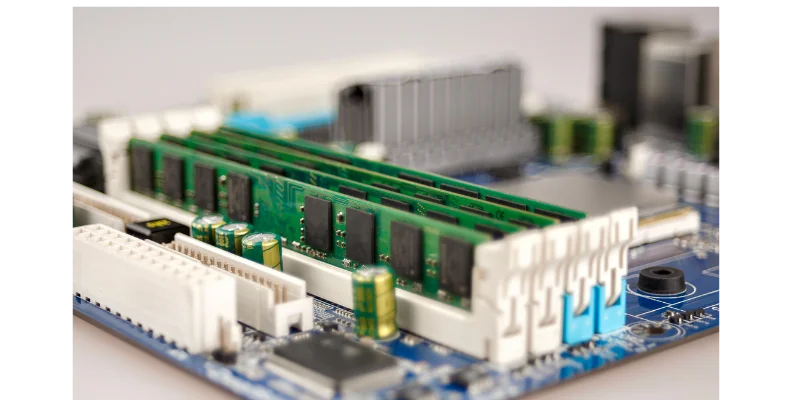
4. Storage Devices
Storage devices are used to store data permanently. Unlike RAM, storage devices retain data even when the power is turned off. The following are the types of storage devices:
Hard Disk Drive
It is a traditional storage device that uses spinning magnetic disks to read and write data. It provides large storage capacity at a relatively lower cost compared to solid-state drives (SSDs). However, HDDs are slower in terms of data access speed due to their mechanical nature.
Solid State Drive
A Solid-State Drive (SSD) is a fast storage device that uses flash memory to store data, with no moving parts, unlike traditional hard drives. SSDs offer much quicker data access, boot times, and file transfers compared to Hard Disk Drives (HDDs). While they are typically more expensive per gigabyte.
Optical Drives
Optical drives are devices that read and write data to optical discs like CDs, DVDs, and Blu-ray discs using laser technology. They were once widely used for installing software, storing media, and backing up data, but are becoming less common in modern computers due to the rise of digital downloads and cloud storage.
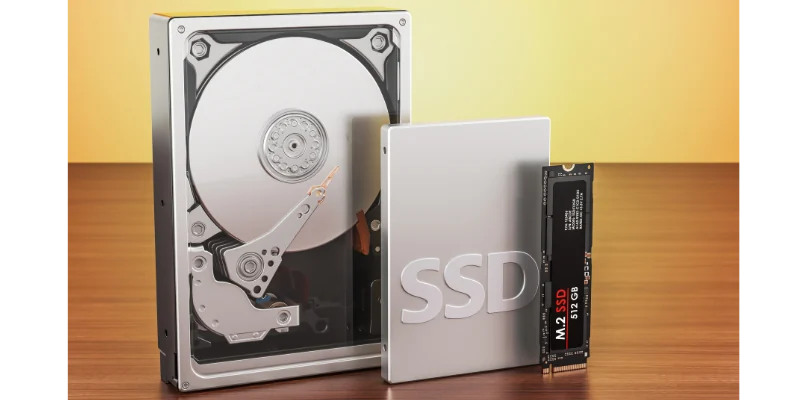
5. Power Supply Unit
The PSU converts electrical energy from an outlet into usable power for the computer’s components. It provides the necessary voltage and current required for different parts, including the CPU, GPU, storage devices, and motherboard.
Wattage
Wattage refers to the amount of electrical power consumed or produced by a device, measured in watts (W). In computers, wattage is important for determining the power supply unit (PSU) capacity needed to ensure all components, like the CPU, GPU, and storage devices, receive adequate power.
Efficiency
Efficiency in computing refers to how well a system or component performs its tasks while using minimal resources, such as power, time, or memory. A more efficient device or process delivers better performance with less energy consumption or lower costs.
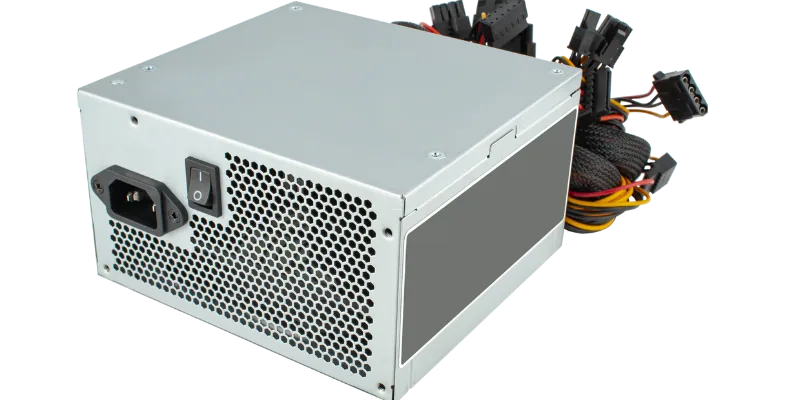
6. Graphic Processing Unit
The GPU (also called a graphics card) is responsible for rendering images, video, and animations, particularly important for gaming, video editing, and 3D rendering. Key components of a GPU:
Video Memory
Video Memory (VRAM) is a specialized type of memory used by the Graphics Processing Unit (GPU) to store image data, textures, and frame buffers for rendering graphics. It allows faster access to visual information, improving performance in graphic-intensive tasks like gaming and video editing.
Cores
Cores refer to the individual processing units within a CPU or GPU that handle tasks independently. A multi-core processor, such as a quad-core or octa-core, can execute multiple instructions simultaneously, improving multitasking and overall performance.
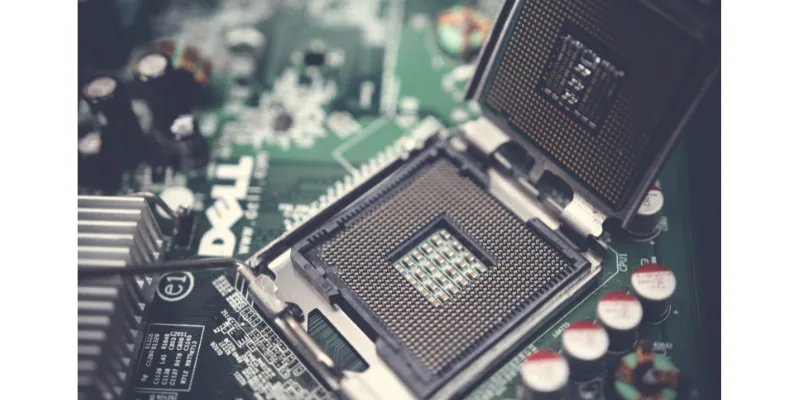
7. Input Devices
input devices are hardware components that allow users to interact with a computer by providing data or commands. These devices are essential for controlling the computer, entering text, navigating interfaces, and giving commands. Some common input devices include:
Keyboard
A keyboard is an input device that allows users to enter text, numbers, and commands into a computer through a set of keys. It typically includes alphabetical keys, function keys, and special keys like Enter, Shift, and Ctrl. Keyboards come in various layouts and designs.
Mouse
A mouse is a pointing input device used to interact with a computer’s graphical interface by moving a cursor on the screen. It typically includes left and right buttons for selecting, clicking, and performing tasks, along with a scroll wheel for navigating. Modern mice may also feature additional buttons for customization and can be either wired or wireless for convenience.
Touch Screen
A touchscreen is an input device that allows users to interact with a computer or mobile device by directly touching the display. It combines display and input functionality, enabling actions like tapping, swiping, and pinching to navigate or control the device. Touchscreens are commonly used in smartphones, tablets, laptops etc.
Microphone
A microphone is an input device that captures sound waves and converts them into electrical signals, allowing audio input into a computer. Modern microphones come in various types, such as USB microphones and wireless microphones, offering different levels of sound quality and convenience.
8. Output Devices
Output devices are hardware components that display or present data from a computer to the user. Common examples include monitors, which display visual information, and printers, which produce physical copies of digital documents. Common output devices include:
Monitors
A monitor is an output device that displays visual information generated by a computer, such as text, images, and videos. Monitors come in various sizes, resolutions, and panel types (e.g., LED, LCD) to suit different needs, from casual browsing to professional graphic design.
Speakers
Speakers are output devices that convert digital audio signals from a computer into audible sound. They are commonly used for listening to music, watching videos, or engaging in video conferencing. Modern speakers vary in size, quality, and connectivity options,
Printers
Printers are output devices that produce physical copies of digital documents, images, or graphics from a computer. They come in various types, such as inkjet, laser, each suited for different printing needs and quality levels. Printers are commonly used in offices and homes for creating hard copies of reports, photos, and other important materials.
What are the 7 major components inside a computer?
Central Processing Unit (CPU)
Motherboard
Random Access Memory
Storage
Power Supply Unit
What are the 5 components of a computer based is?
The five basic components of a computer are the Hardware, software, data, network and people.
What are the 5 software components of a computer?
Operating System
Device Drivers
Application Software
Utility Software
Firmware
What is a basic computer?
A basic computer is a system designed to perform simple tasks such as input, processing, storage, and output of data. It typically includes essential components like a CPU, memory, storage, and input/output devices.
Conclusion
The hardware components of a computer work together to process data, execute programs, and communicate with the outside world. Every Component work with the help of other component. Understanding these components helps in diagnosing problems, upgrading parts, or building a computer system tailored to specific needs (e.g., gaming, business, or research).
Please Write Your Comments